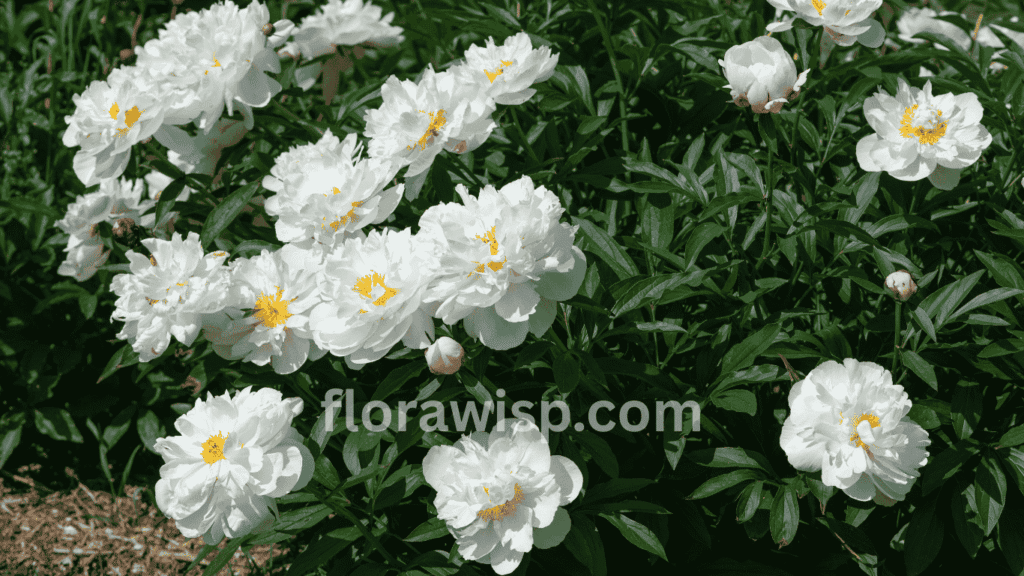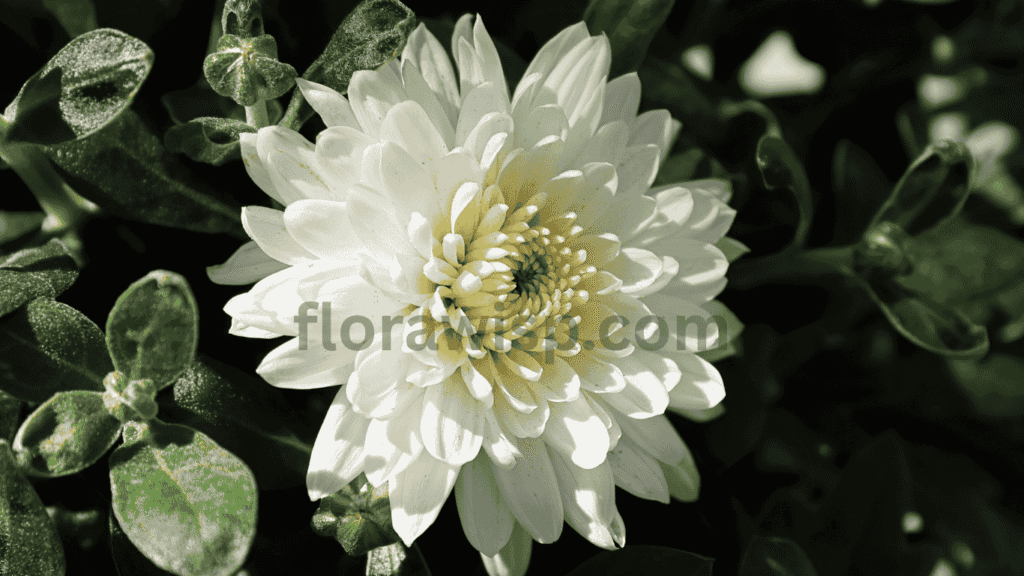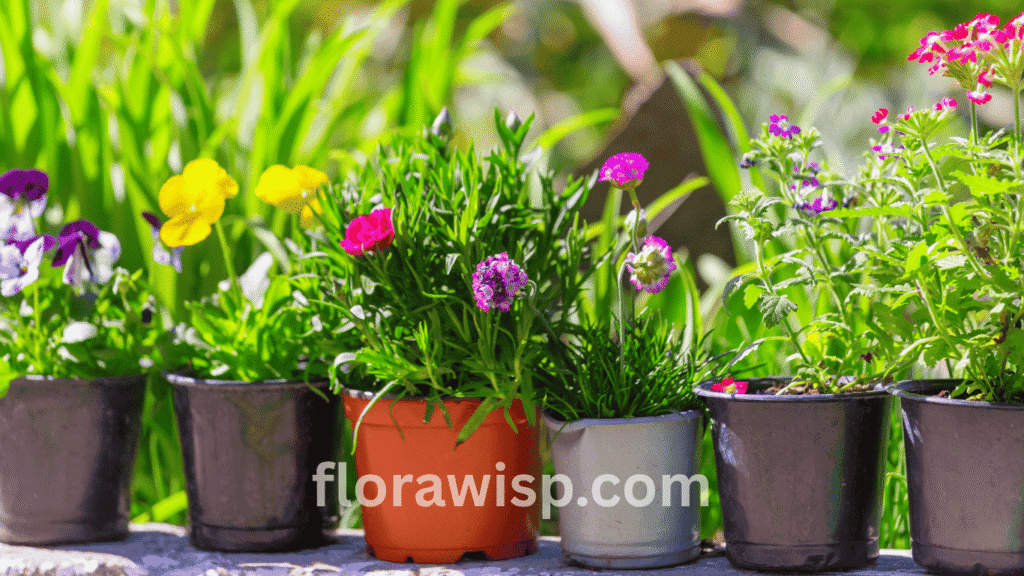White peonies have adorned gardens for centuries, first cultivated in ancient China for their ornamental beauty and medicinal value before captivating Europe and North America. Their pure, cloud-like blooms symbolize honor, purity, and new beginnings, making them a favorite in both landscapes and floral design. Timeless varieties such as ‘Festiva Maxima,’ ‘Shirley Temple,’ and ‘Duchesse de Nemours’ bring fragrance, elegance, and lasting charm from late spring to early summer.
Just like other stunning blooms in the Peony flower family, tree peonies, Itoh hybrids, and herbaceous types offer unique growth habits and bloom times, allowing gardens to stay vibrant for weeks. Proper care of rich, well-drained soil, full sun, and seasonal pruning ensures healthy plants and abundant flowers. Common challenges like powdery mildew, leaf spots, and pests can be managed with good airflow, clean planting beds, and targeted treatments.
Beyond the garden, white peonies are treasured in wedding bouquets for their romantic softness, crafted into luxurious faux arrangements, and valued for their therapeutic properties in tea, skincare, and hair care. Sourcing healthy plants from reputable nurseries or trusted online sellers guarantees robust growth and true-to-type blooms, bringing decades of beauty to any garden.
In This Article
Popular White Peony Varieties
When I first started growing peonies, understanding the different varieties was crucial to creating a thriving garden that blooms beautifully throughout the season. White peonies come in several types, each with distinct characteristics that suit different garden styles and climates. I’ve grown many of these varieties and learned how to select and care for them to maximize their stunning impact.
Tree Peonies vs. Itoh Peonies: Key Differences
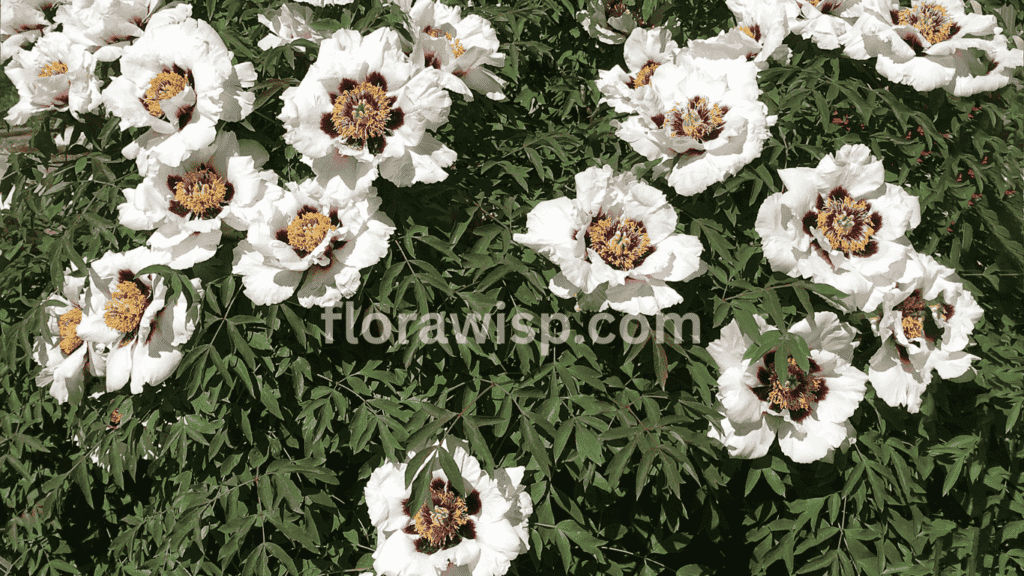
One of the biggest distinctions to know is between the white tree peony and the white Itoh peony. Tree peonies are woody shrubs with thick, sturdy stems that can live for decades.
Their flowers tend to be larger and bloom earlier in the spring, often boasting a striking presence in the garden. I’ve always admired how the tree peony’s robust structure provides both floral beauty and architectural interest.
In contrast, the Itoh peony is a hybrid between tree and herbaceous peonies. The white Itoh peony combines the best of both worlds: it has herbaceous stems that die back each winter but offers longer-lasting blooms and greater disease resistance. From my experience, Itoh peonies flower later than tree peonies, often extending your white peony blooming season well into early summer.
Double White Peonies
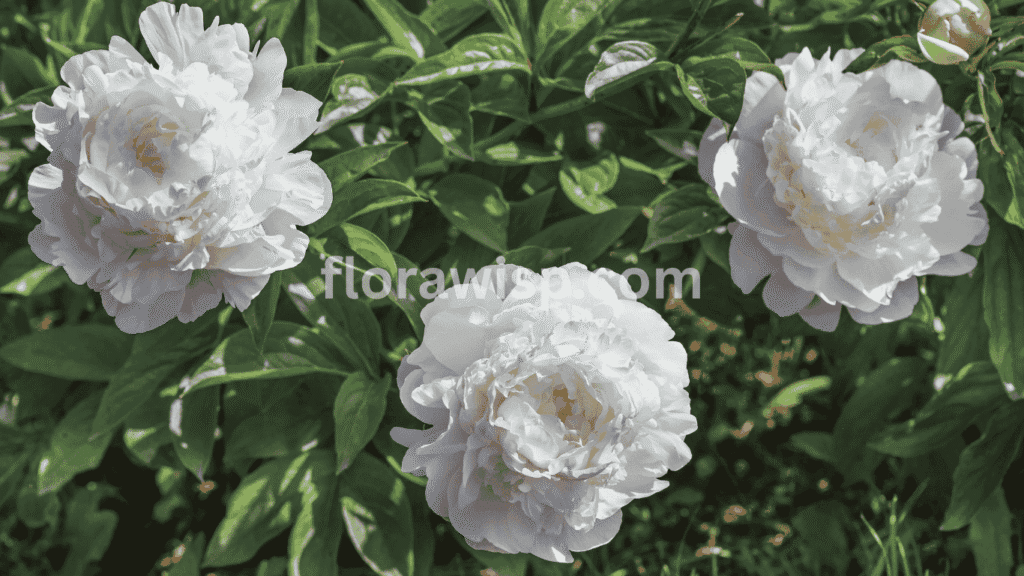
Among the various white peony varieties, the double white peony is a favorite for many gardeners, including myself. These peonies have densely layered petals, giving them a lush, full appearance that looks elegant in any garden setting or floral arrangement.
The classic look of double white peonies adds softness and luxury to garden beds, making them a must-have for those who want timeless beauty.
Charlie’s White Peony & White Cap Peony
For gardeners looking to add uniqueness, specialty varieties like Charlie’s white peony and the white cap peony stand out. Charlie’s white peony offers a delicate shade of white with subtle hints of cream, while the white cap peony is admired for its almost translucent white petals that catch the light beautifully.
Another interesting variant is the white peony with yellow center, which provides a charming contrast that brightens any floral display. I’ve found these specialty types excellent for creating focal points or complementing other plants in mixed borders.
Shrubs and Bush Types for Your Garden
Finally, don’t overlook the structural role of white peony shrubs and white peony bushes in your landscape. These varieties provide not just flowers but also form and texture. In some climates, they even maintain their leaves longer, adding greenery when other perennials have gone dormant. Mixing these shrubs with tree and Itoh types can give you a layered, dynamic garden that blooms in waves.
From my personal gardening journey, planting a combination of these white peony types ensures extended bloom times, diverse textures, and year-round interest. Whether you prefer the stately tree peony or the versatile Itoh, incorporating a variety of white peonies creates a stunning garden display that few other flowers can match.
Stunning White Peony Varieties
Exploring lesser-known and spectacular white peony varieties has added fresh beauty and variety to my garden, and I’m excited to share these with you. Each of these varieties has unique traits, origins, and growing requirements that can enhance your gardening experience and landscape design.
Bridal Gown Peony
- Scientific Name: Paeonia lactiflora ‘Bridal Gown’
- Plant Type: Herbaceous
- Origin: China
- Sun Exposure: Full sun to partial shade
- Growing Zone: USDA 3-8
Landscaping Ideas: This variety’s pure white, full double blooms with a delicate fragrance make it perfect for classic garden borders or as a striking centerpiece in mixed perennial beds. In my garden, Bridal Gown peonies create a serene, romantic atmosphere when paired with lavender or soft pink roses.
Bomb Peonies
- Scientific Name: Paeonia lactiflora ‘Bomb’
- Plant Type: Herbaceous
- Origin: Europe
- Sun Exposure: Full sun
- Growing Zone: USDA 4-9
Landscaping Ideas: Known for its large, fluffy white blooms with a slight cream undertone, Bomb Peonies add texture and volume. I like using them near pathways or patios where their impressive flowers can be admired up close. Their strong stems hold blooms upright, making them ideal for cut flower gardens.
Festiva Maxima
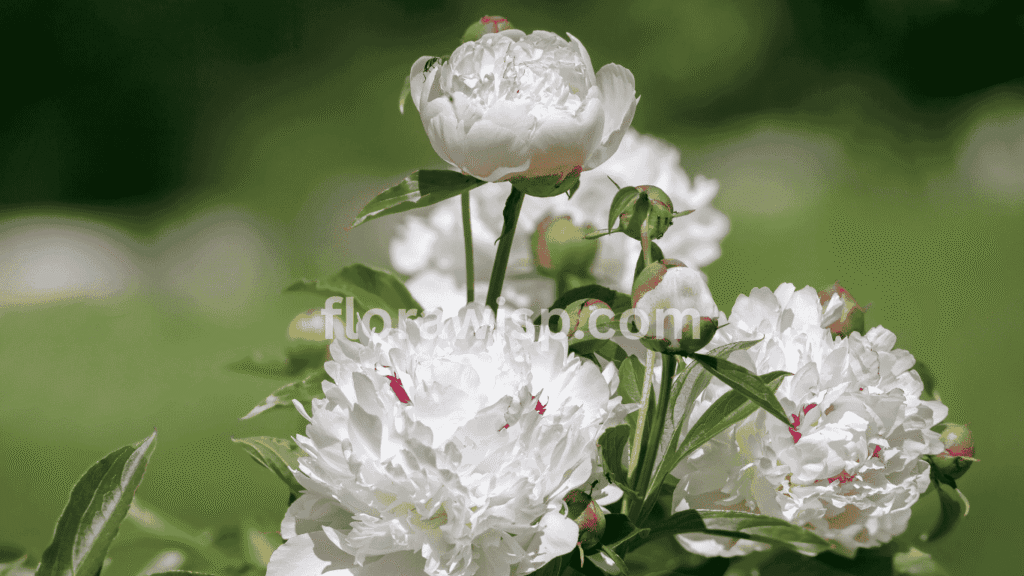
Scientific Name: Paeonia lactiflora ‘Festiva Maxima’
Plant Type: Herbaceous
Origin: France
Sun Exposure: Full sun
Growing Zone: USDA 3-8
Landscaping Ideas: This historic variety offers large, fragrant white flowers splashed with crimson flecks, adding visual intrigue. I often plant Festiva Maxima as part of a formal garden design or near entryways where their fragrance welcomes guests warmly.
Lotus Queen
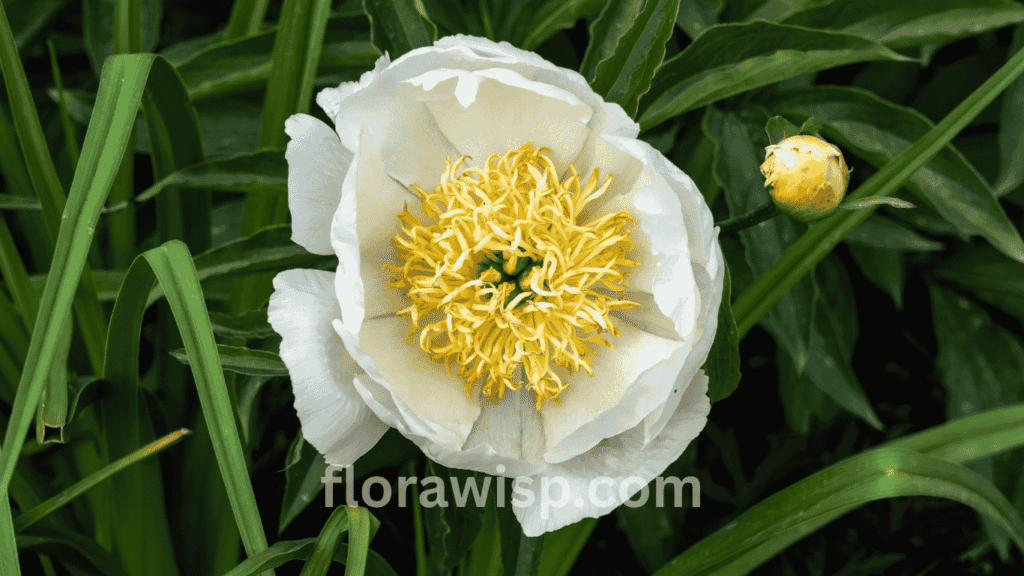
Scientific Name: Paeonia lactiflora ‘Lotus Queen’
Plant Type: Herbaceous
Origin: United States
Sun Exposure: Full sun
Growing Zone: USDA 3-8
Landscaping Ideas: With its broad, bowl-shaped blooms and soft white petals, Lotus Queen makes an elegant addition to cottage-style gardens. In my experience, they pair beautifully with blue delphiniums or catmint for a pleasing color contrast.
Early Windflower
- Scientific Name: Paeonia tenuifolia ‘Early Windflower’
- Plant Type: Herbaceous
- Origin: Russia
- Sun Exposure: Full sun to light shade
- Growing Zone: USDA 3-7
Landscaping Ideas: A rarer type with delicate, wind-swept foliage and small white blooms, Early Windflower is ideal for naturalistic or woodland gardens. I’ve found that planting it near ferns or hostas enhances its airy charm.
Athena Peony
- Scientific Name: Paeonia lactiflora ‘Athena’
- Plant Type: Herbaceous
- Origin: Hybrid
- Sun Exposure: Full sun
- Growing Zone: USDA 4-9
Landscaping Ideas: Athena produces elegant, fragrant white flowers with a slight pink blush on the edges. I recommend planting this variety in mixed borders or cutting gardens where its subtle color variation adds interest.
Bowl of Cream
- Scientific Name: Paeonia lactiflora ‘Bowl of Cream’
- Plant Type: Herbaceous
- Origin: United States
- Sun Exposure: Full sun
- Growing Zone: USDA 3-8
Landscaping Ideas: As the name suggests, this variety features creamy-white, bowl-shaped flowers that hold up well in heat. It’s perfect for sunny garden spots and looks stunning planted en masse for a soft, textured display.
Bridal Shower
- Scientific Name: Paeonia lactiflora ‘Bridal Shower’
- Plant Type: Herbaceous
- Origin: Hybrid
- Sun Exposure: Full sun to partial shade
- Growing Zone: USDA 4-8
Landscaping Ideas: Known for its large, pure white double blooms and strong fragrance, Bridal Shower peonies are wonderful in formal arrangements or garden beds. They provide a romantic vibe, perfect for weddings or special garden spaces.
Cheddar Charm
- Scientific Name: Paeonia lactiflora ‘Cheddar Charm’
- Plant Type: Herbaceous
- Origin: United States
- Sun Exposure: Full sun
- Growing Zone: USDA 3-8
Landscaping Ideas: Though primarily a yellow peony, Cheddar Charm often features white blooms with subtle yellow undertones, making it a unique choice to diversify a white peony collection. I like to use it alongside solid white varieties for soft color gradation.
Duchesse de Nemours
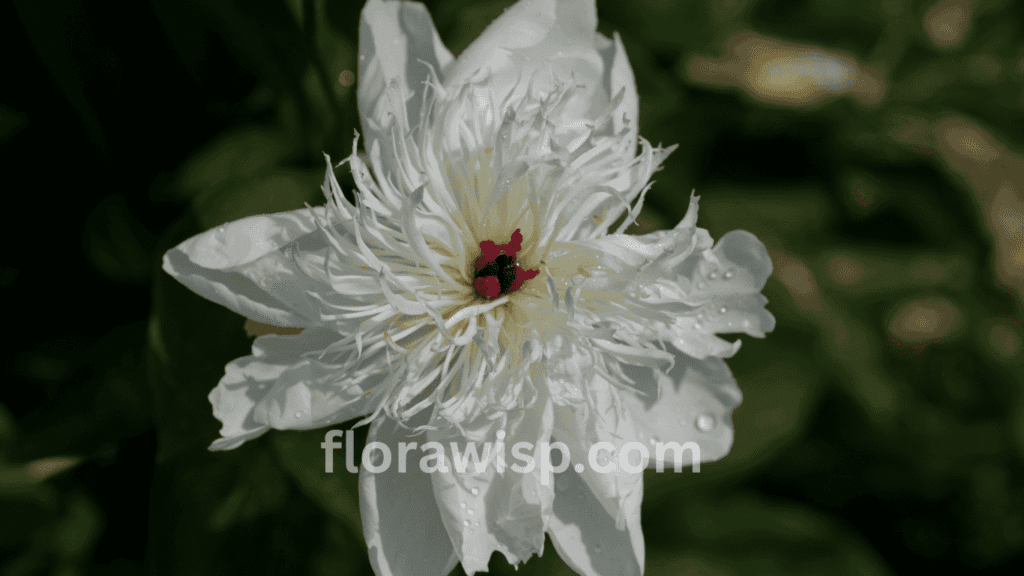
Scientific Name: Paeonia lactiflora ‘Duchesse de Nemours’
Plant Type: Herbaceous
Origin: France
Sun Exposure: Full sun
Growing Zone: USDA 3-8
Landscaping Ideas: This classic white peony offers large, fragrant flowers with a creamy tint and sturdy stems. It’s a garden favorite for cut flowers and pairs beautifully with deep green foliage for contrast.
Feng Dan Bai
- Scientific Name: Paeonia lactiflora ‘Feng Dan Bai’
- Plant Type: Herbaceous
- Origin: China
- Sun Exposure: Full sun to partial shade
- Growing Zone: USDA 4-9
Landscaping Ideas: A traditional Chinese variety, Feng Dan Bai blooms early with pure white flowers that are slightly fragrant. I often recommend it for Asian-inspired gardens or alongside bamboo and ornamental grasses.
Gardenia
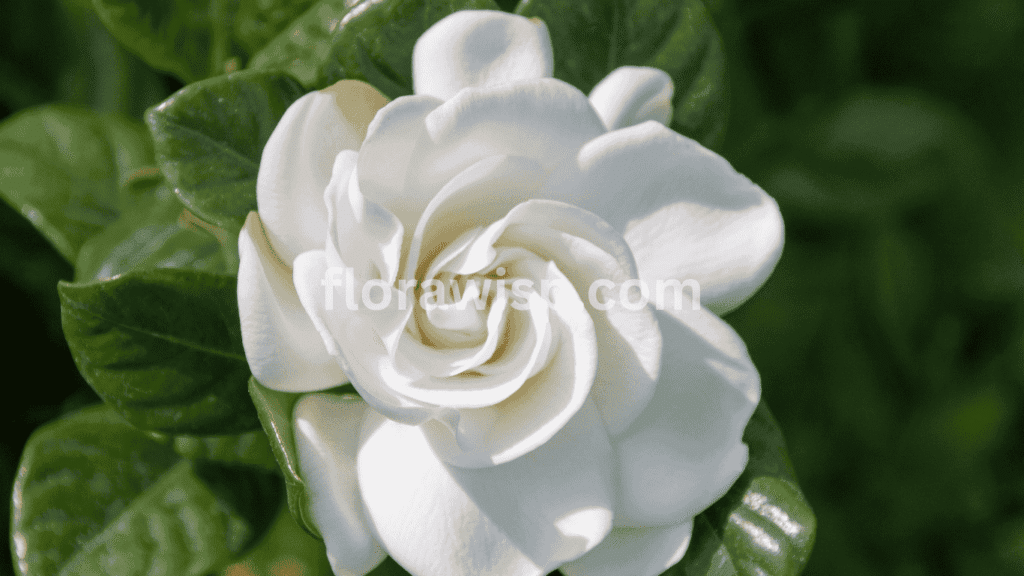
Scientific Name: Paeonia lactiflora ‘Gardenia’
Plant Type: Herbaceous
Origin: Hybrid
Sun Exposure: Full sun
Growing Zone: USDA 4-9
Landscaping Ideas: Gardenia offers double, creamy white flowers with a soft fragrance. It works well in sunny perennial beds and adds a delicate touch when combined with pastel-colored blooms.
Honey Gold
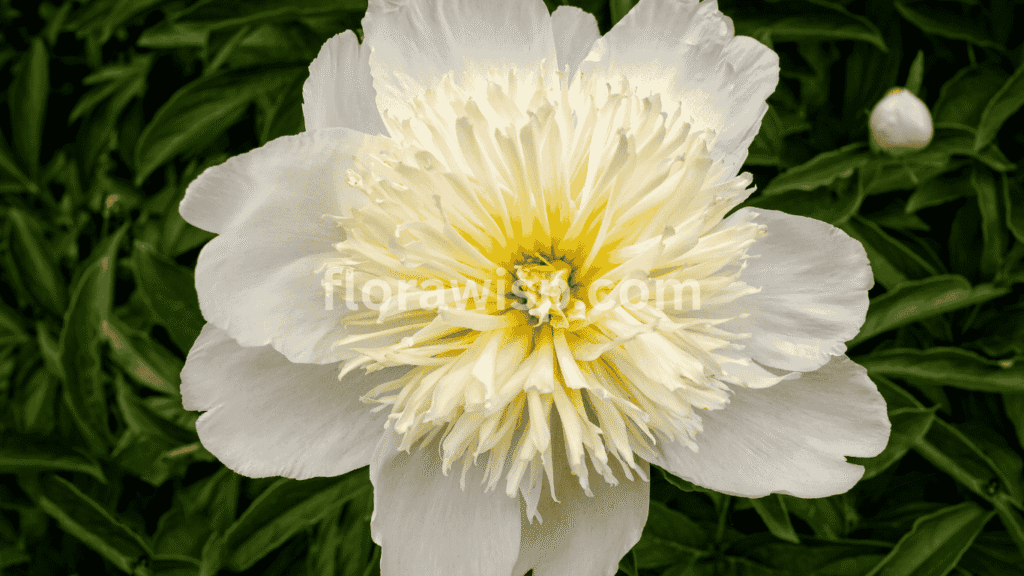
Scientific Name: Paeonia lactiflora ‘Honey Gold’
Plant Type: Herbaceous
Origin: Hybrid
Sun Exposure: Full sun
Growing Zone: USDA 4-9
Landscaping Ideas: Though named for its golden hues, some Honey Gold peonies present creamy white tones with hints of gold. I use it to create subtle warmth in mostly white-themed gardens.
Miss America
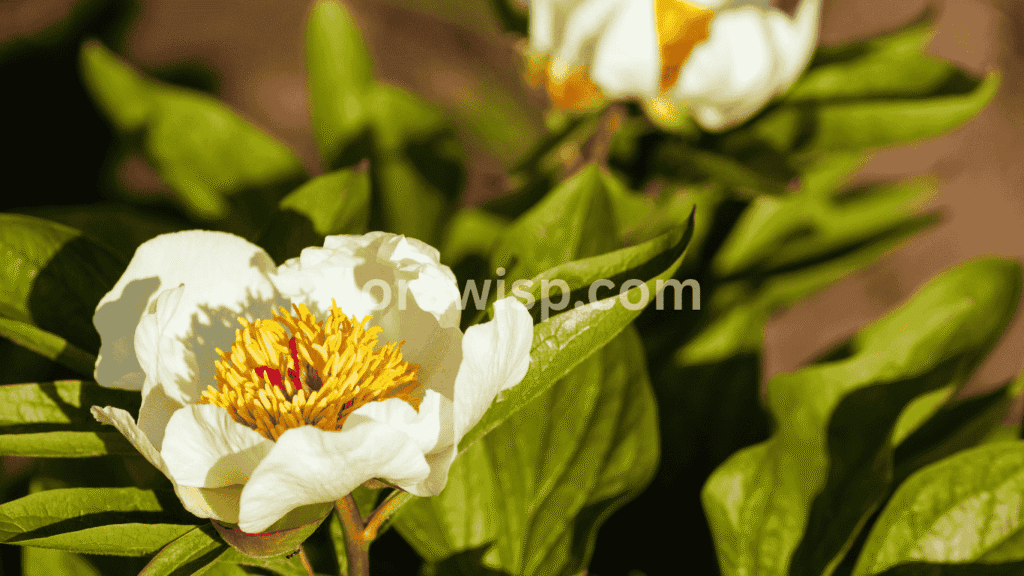
Scientific Name: Paeonia lactiflora ‘Miss America’
Plant Type: Herbaceous
Origin: United States
Sun Exposure: Full sun
Growing Zone: USDA 3-8
Landscaping Ideas: Miss America is beloved for its large, white double blooms and strong fragrance. It’s a dependable choice for cut flower gardens and mixed borders.
Shirley Temple
- Scientific Name: Paeonia lactiflora ‘Shirley Temple’
- Plant Type: Herbaceous
- Origin: Hybrid
- Sun Exposure: Full sun
- Growing Zone: USDA 4-9
Landscaping Ideas: This variety combines soft white petals with a subtle pink blush, offering a delicate and romantic look. I often plant Shirley Temple peonies near seating areas to enjoy their lovely scent up close.
Exploring these diverse white peonies varieties has enriched my gardening journey, allowing me to craft visually stunning, fragrant, and textured landscapes. By understanding their origins, sun needs, and ideal uses, you too can select white peonies that thrive in your garden while enhancing your outdoor space’s beauty and charm.
Common Problems with White Peonies and Solutions
I’ve learned to identify and tackle common issues such as white mildew on peonies, white spots on leaves, and pest problems to keep my plants healthy and blooming beautifully season after season.
Treating White Mildew on Peonies
One of the most common issues I’ve encountered with white peonies is white mildew, also known as powdery mildew. It shows up as a fine, powdery white coating on the leaves and sometimes stems, especially during warm, humid conditions or when air circulation is poor. In my early gardening days, I noticed this mildew could stunt growth and reduce flower quality if left untreated.
To manage this, I always recommend improving airflow around the plants by spacing them properly and pruning to open the canopy. Early in the season, before symptoms appear, applying a fungicide designed for powdery mildew can prevent the fungus from taking hold. If you spot affected leaves, remove and discard them promptly to stop spread. In my experience, consistent monitoring and early action keep white mildew well under control, preserving the vibrant look of your white peonies.
Managing White Spots on Leaves
White spots on peony leaves can sometimes indicate fungal infections different from powdery mildew, or occasionally nutrient imbalances. From my garden observations, these spots often begin as small patches but can expand, weakening the foliage. Proper diagnosis is essential; sometimes leaf spot diseases need targeted fungicide treatments, while nutrient-related spots benefit from soil testing and appropriate fertilization.
A regular routine of removing fallen leaves and debris reduces fungal spores in the soil. Ensuring your white peonies are planted in well-draining soil also minimizes root stress, which helps plants resist fungal diseases. I’ve seen healthier foliage in gardens where these cultural practices are followed.
Pest Control for Healthy White Peonies
Pests rarely cause severe damage to white peonies, but they can still be a nuisance. Ants are often attracted to the sweet nectar on peony buds, though they don’t typically harm the plants. Thrips and aphids, however, can sometimes feed on young shoots or buds, potentially deforming blooms if populations grow unchecked.
I’ve favored natural pest control methods like introducing ladybugs and lacewings, which are effective predators of aphids and thrips. In cases of heavy infestation, insecticidal soaps or neem oil sprays provide safe, targeted control without harming beneficial insects. Maintaining healthy plants through proper watering and nutrition also reduces pest vulnerability.
White Peonies in Floral Arrangements and Weddings
White peonies have long been treasured in the world of floral design, especially for weddings, and with good reason. Their soft, romantic appearance lends an air of timeless elegance to bridal bouquets and arrangements. From my experience working closely with florists and brides across various wedding styles, white peonies stand out as a centerpiece flower that complements rather than competes with other blooms. For a striking contrast in wedding arrangements, pairing them with a rich, velvety Red Peony can add depth and dramatic flair.
Why White Peonies Are a Bridal Favorite
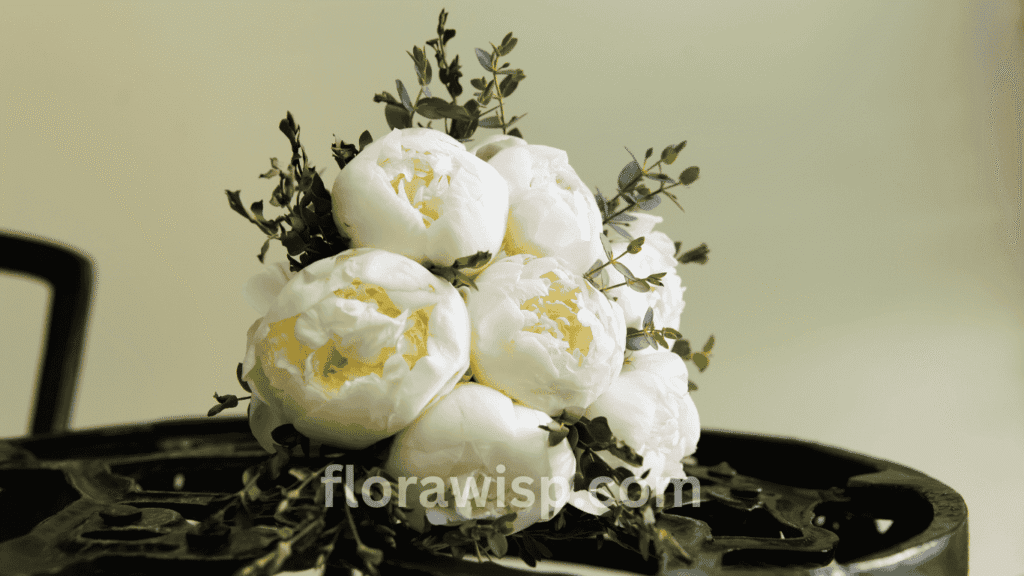
The large, lush petals of white peonies create a full, luxurious look that adds texture and softness to any bouquet. When paired with classic white roses and peonies, they form an all-white arrangement that feels both fresh and sophisticated.
For a gentle pop of color or white peony with pink peonies accents are stunning choices that add subtle depth without overwhelming the arrangement.
In weddings, the choice of flowers often reflects the theme or mood. White peony bouquets can range from understated and minimalist to bold and extravagant. Combining white peonies with greenery like eucalyptus or ferns brings a natural, garden-inspired feel that is perfect for outdoor or rustic weddings. Conversely, adding red and white peonies creates dramatic contrast and passion for formal ceremonies.
My Experience with Wedding Peonies
Having helped arrange numerous wedding floral designs, I can attest to the versatility of white peonies. Their blooms are large but lightweight, making them easy to work with for peony bouquet makers. More importantly, white peonies hold their freshness impressively well in vases and bouquets when kept cool. This durability makes them a reliable choice for long wedding days.
Brides often tell me how much they appreciate the subtle fragrance white peonies bring fresh but not overpowering. Whether it’s a classic garden wedding or a modern elegant affair, bridal bouquet white peonies elevate the floral decor with a sense of grace and charm that few other flowers match.
Artificial & Faux White Peonies
While nothing quite compares to the scent and feel of fresh white peonies, growing conditions and seasons don’t always cooperate. That’s where faux white peonies come in as a practical, beautiful alternative. I’ve found that high-quality white artificial peonies can serve gardeners and decorators alike, especially when fresh blooms are unavailable or short-lived.
Benefits of Artificial White Peonies
The primary advantage of using artificial white peonies is their longevity. Unlike fresh flowers that wilt and require watering, faux peonies maintain their vibrant appearance year-round with minimal care. This makes them ideal for indoor decorations, event setups, or even floral designs in spaces where sunlight is limited.
Choosing the right white silk peonies is crucial. I’ve learned that investing in realistic, well-crafted faux peonies pays off, as they look natural even up close. Good quality faux flowers mimic the delicate petal textures and subtle color gradients found in real white peonies, avoiding the “plastic” look often associated with cheaper alternatives.
Styling Tips for Faux White Peonies
From personal experience decorating homes and event venues, mixing faux white peonies with real greenery creates an authentic, fresh look that fools even discerning eyes. They’re perfect for high shelves, dimly lit rooms, or places where fresh flowers would struggle to thrive. Faux white peonies also work well in arrangements that need to last several days or longer, such as office decor or wedding venues with early setup.
Health Benefits and Uses of White Peony
Over the years, I’ve learned that white peonies offer more than visual beauty; they also hold value in wellness, skincare, and traditional cooking. The roots of white peony (Paeonia lactiflora) have been valued in herbal medicine for centuries, especially in traditional Chinese remedies, where they are known for balancing the body’s energy and supporting overall health.
Medicinal Benefits of White Peony Root
White peony root is widely used for its anti-inflammatory, antioxidant, and calming properties. It’s a key ingredient in many herbal blends that support the immune system, improve circulation, and help reduce muscle tension. I’ve met gardeners who grow white peonies not only for their beauty but also to harvest the roots for traditional remedies.

White peony supplements and white peony tea are increasingly popular in the wellness community. From my own experience brewing white peony tea, I’ve found it particularly soothing for mild digestive discomfort and stress. Scientific studies have also noted its potential to support joint health and maintain hormonal balance.
White Peonies in Beauty and Hair Care
Beyond health, white peony extract is making its way into modern skincare and hair care products. Items like Mielle White Peony Leave-In Conditioner and Hempz White Peach Rose & Peony use its natural compounds to boost hydration, promote softness, and protect hair from environmental damage. I’ve recommended such products to friends who love incorporating garden-inspired ingredients into their daily routines.
A Versatile Plant Beyond the Garden
Whether steeped into tea, used in herbal capsules, or infused into beauty products, the white peony has earned its place as both a medicinal ally and a decorative treasure. Its versatility is a testament to why so many gardeners, myself included, value it beyond its ornamental role.
Buying and Delivery Options for White Peonies
Finding healthy white peonies for your garden is as important as knowing how to grow them. Over time, I’ve learned that starting with quality plants makes a world of difference in bloom size, plant longevity, and resistance to disease.
Where to Buy White Peonies
If you have local nurseries, they’re worth visiting to see the plants in person before purchasing. Well-established sources like White Flower Farm are renowned for their strong, disease-resistant stock. Their white peony varieties often arrive with healthy roots and well-developed buds, ensuring a good start.
For those shopping online, reputable specialty growers offer detailed planting guides and guarantees on plant health. Search for white peonies for sale from trusted sellers who provide clear photos, accurate variety descriptions, and honest customer reviews.
White Peonies Delivery Services
If you live in regions with limited nursery options, delivery services can be a lifesaver. For example, gardeners in Texas can benefit from white peonies delivery in Houston, TX, where reliable vendors ship fresh plants directly to your door. I’ve personally recommended such services to fellow gardeners who can’t find high-quality stock locally.
Tips for Successful Purchases
When ordering white peonies online or through delivery, always check for:
- Firm, disease-free roots with visible growth eyes
- Shipping schedules that align with your planting season
- Guarantees or return policies in case plants arrive damaged
Choosing established growers not only increases your success rate but also ensures you’re getting the true variety you ordered. Something I’ve learned matters a great deal when you’re expecting those first beautiful white blooms.
FAQs
Q. What is the best time to plant white peonies?
The best time to plant white peonies is early fall, typically September to October, so roots establish before winter. Planting during this period ensures strong growth and healthy blooms by spring. Fall planting allows the peony roots to adapt to soil conditions and develop a solid foundation for the growing season.
Q. How long do white peonies take to bloom?
White peonies generally take 2 to 3 years after planting to produce full blooms. However, some varieties may bloom in their second year if well cared for. Patience is key to healthy growth and proper care speeds up flowering, but mature plants reliably bloom every spring.
Q. Can white peonies grow well in shaded areas?
White peonies prefer full sun (6+ hours daily) but can tolerate partial shade. In shaded spots, expect fewer flowers and more foliage. For best results, plant them where they receive morning sun and afternoon shade to balance light and growth.
Q. Are white peonies deer resistant?
White peonies are somewhat deer resistant but not completely deer-proof. Deer may nibble young shoots or buds in areas with heavy pressure. Using deterrents or planting alongside more deer-resistant species helps protect your peonies.
Q. How do I prevent fungus on my white peony plants?
Prevent fungus by ensuring good air circulation, proper spacing, and avoiding overhead watering. Removing dead leaves and debris reduces infection risk. Applying fungicides early during humid conditions also helps control fungal diseases like white mildew.
Conclusion:
White peonies combine centuries-old heritage with enduring beauty, offering a spectrum of forms, fragrances, and bloom times that suit every garden style. From the stately tree peony to the versatile Itoh and classic herbaceous types, each variety brings its own charm, resilience, and seasonal magic. With thoughtful care, ample sunlight, rich soil, and timely maintenance they reward gardeners with abundant blooms year after year. Whether gracing a wedding bouquet, brightening a summer border, or lending their soothing properties to wellness and beauty, white peonies remain a timeless favorite. Choosing healthy plants and tending them with attention ensures these elegant flowers will flourish, filling gardens and homes with their purity, fragrance, and grace for decades to come.
References:
13 of the Best White Peony Varieties to Grow at Home
21 White Peony Varieties for Your Flower Garden
History and Origins of Peony Cultivation
Gardener, M.Sc. Horticulture
Elara Bennet is a gardening writer from Austin, TX, passionate about sustainable lawns and blooms. Read full bio →

